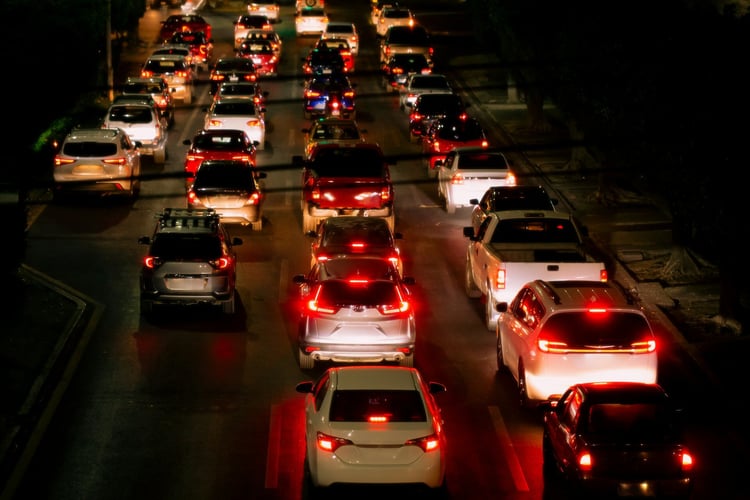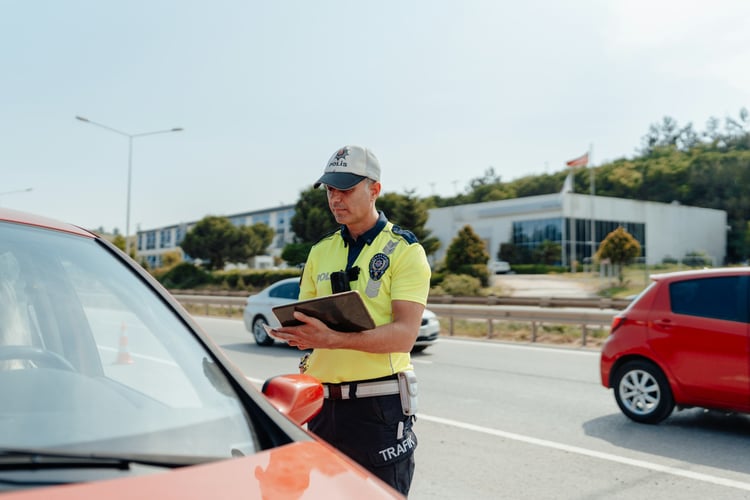
Traffic problems aren’t new in Denver. Most drivers know what it feels like to lose time sitting behind brake lights or dealing with another surprise construction zone. Some of these frustrations turn into tickets. Over time, repeated violations can start piling up, affecting more than just your driving record. The colder months make things even trickier. Roads get slick, visibility drops, and the daily grind becomes more unpredictable. That’s where planning ahead and paying attention to patterns can make a real difference. For many, working with Denver traffic violation lawyers can be part of that plan, especially when repeat offenses are starting to add up.
Common Traffic Violations That Happen Again and Again
Some mistakes on the road happen more than once, not always out of neglect, but out of habit. In Denver, there are spots and situations that seem to trip people up over and over again.
One common issue is speeding in construction zones, especially along I-25 during evening or morning commutes. When delays feel constant, it’s tempting to ignore the slower limits. But those flashers are always watching. Another routine problem comes at local stop signs, especially around older neighborhoods where streets twist and visibility can be low. A rolling stop might not seem serious until it’s caught again and again.
Left turns at restricted intersections are another one that catches drivers off guard. Sometimes the posted hours for turn restrictions are hard to spot or happen during unusual timeframes. Missing that kind of detail can mean a ticket, even when traffic feels light.
When these things happen more than once, it’s less about one bad day and more about not adjusting to the environment. Getting familiar with risky areas and changing how we drive there doesn’t wipe away past tickets, but it does help avoid new ones from landing in the mailbox.
How Seasonal Changes Make Traffic Worse in Denver
By early November, Denver begins to feel different on the roads. The first snow can come fast and early, making it tough to shift into safe winter driving. Even light flurries can cause issues when people don’t adjust their speed or following distance. And with temperatures dropping, black ice can form during the morning and evening commutes long before the major snowfall hits.
Shorter days bring limited visibility, especially around 5 p.m. when workers are hurrying home. Seeing pedestrians, cyclists, or signs can get harder, even in familiar neighborhoods. Low sun angles at that hour don’t help either.
Fall leaf cleanup adds another layer. You’ll start to see parked trucks, cones, and temporary signs—some redirecting traffic, others requiring you to move your car. Add in the city’s usual maintenance projects planned before deep winter sets in, and it’s easy to find yourself rerouted or stuck in a merge. When these changes catch drivers off guard, mistakes are more likely.
It’s not always possible to predict every condition, but being aware of when they tend to start and how they impact your usual route makes a difference.
What to Do Differently if You’ve Been Ticketed Before
Getting one traffic ticket might be frustrating. Getting a few? That can feel like you’re stuck in a loop. But there are ways to break the cycle. It starts by taking a closer look at where and when the violations are happening.
Keep track of your past tickets. Look at the locations, times, types, and seasons. Is there a pattern? Are you rushing during drop-offs or always hitting trouble on the same route to work? Patterns like these might not be obvious in the moment, but once identified, they’re hard to unsee.
It helps to adjust driving habits based on those repeat issues. If rolling stops happen near your home, slow down earlier. If construction zones always trip you up, check city update maps before your commute. And if things still feel unclear, working with Denver traffic violation lawyers may help clarify what to expect if violations keep stacking up.
Long-term changes usually come from small decisions. Real progress happens when you shift focus from what went wrong toward how to avoid repeating it.
Novo Legal handles city and state traffic cases in Denver and provides help for repeat offenders seeking ways to cut points and lower their risk of future infractions.
How to Adjust Your Driving for Busy Urban Corridors
Denver has several major roads that don’t give drivers much room for mistakes. Colfax, Speer, and Broadway are all high-volume, high-stress areas during peak times. Even those who know them well can get caught off guard.
During rush hour, what would normally be a five-minute stretch can double or triple in time. That pressure leads some to weave between lanes or try shortcuts that might not be legal. The better move is staying steady, keeping to one lane longer than usual, and resisting the urge to beat the lights.
Using side streets seems like a good workaround, but cutting corners too aggressively through neighborhoods creates new risks. Kids walking home, narrow driveways, and unexpected stop signs all demand extra caution.
Pay close attention to service signs. Denver has strict time-based enforcement zones for things like bus lanes or turn restrictions. What’s allowed at 10 a.m. may cost you a fine at 4:30 in the afternoon. Getting used to reading those signs actively instead of casually scanning can prevent small errors that stack up fast.
Driving Smarter in High-Fine Zones
Not all zones are created equal when it comes to ticket amounts. There are spots in Denver where mistakes come with higher fees and more consequences.
School zones are one example. The signage can be confusing, especially if flashing lights are inconsistent. But tickets in these areas often come with bigger penalties, even if traffic seems light. Make it a habit to reduce speed in school areas during possible active hours, not just during pickup and drop-off.
Metered areas downtown are another place where small errors trigger bigger fines, especially during holidays or events. Time limits may shift without much notice, and downtown enforcement tends to tighten during busy months. Pay close attention before parking, even within the same block. Timed lights and short-street turns often catch people by surprise too.
Camera-monitored intersections are increasing in number. Once you know which lights are monitored, it’s easier to adjust driving habits while approaching them. That doesn’t mean driving differently just for those lights, but being aware can help calm down rushed decisions.
Getting familiar with these higher-risk zones means you can plan your routes to reduce exposure or handle them more carefully.
Staying Ahead of Repeat Traffic Issues in Denver
Stopping recurring violations starts with noticing patterns. Late fall in Denver isn’t only about cold mornings and early dark. It’s the season when road behavior shifts, rules tighten, and bad habits come into focus.
The more we understand how the city operates—its traffic cameras, heavy enforcement times, and seasonal changes—the more we’re able to drive with intention. That doesn’t mean being fearful every time you get behind the wheel. It just means limiting surprises.
Sometimes mistakes happen. But the fewer surprises we build into our daily driving, the easier it becomes to stay clear of repeated tickets. Reducing risk isn’t about making giant changes. It’s remembering the trouble spots and adjusting where we can.
Denver drivers face a mix of urban congestion, weather shifts, and high-enforcement areas each fall and winter. Learning from those conditions gives us a better chance at smoother commutes and fewer stops at red and blue flashing lights.
Repeated violations can start to feel like a cycle you can’t break, especially with how traffic enforcement works in Denver. At Novo Legal, we take time to look at your full story and help make sense of what’s ahead. If you’re dealing with charges or warning notices piling up, it may help to read more about how we approach cases as Denver traffic violation lawyers.



